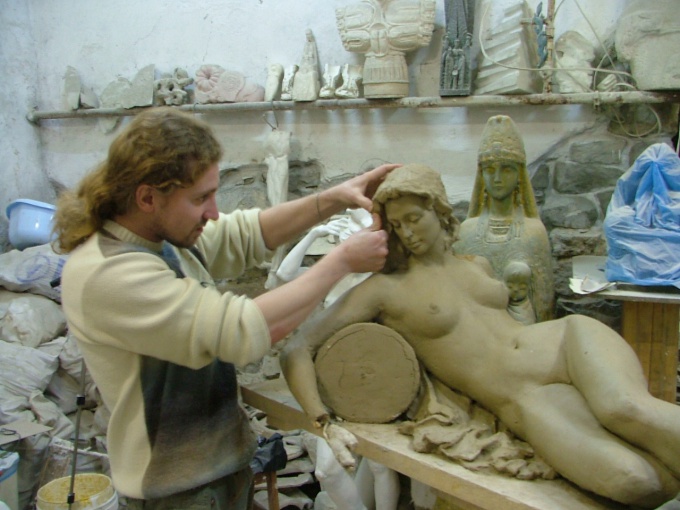You will need
- - clay;
- a wire or wooden frame for the shape;
- - plaina sheets;
- - polyethylene.
Instruction
1
Make plans, prepare the clay more than necessary for your planned sculpture. It is simple. In the box (or in another capacity, for example, pan) sprinkled dry clay. Level it necessary. Then fill it with water so that the water acted as separate lumps. In three or four day clay to use for sculpting. Removing it, leave uneven terrain - some of the hollows were water, then the clay will have a different consistency that is necessary.
2
Mold the clay in mainly hands, but you will need special tools and equipment for sculpting. It is best to sculpt on the machine which you can either purchase in store or make it yourself. It is a high stool with a rotating lid. You will also need a set of stacks for more accurate work, study of fine details and remove excess clay.
3
Small figures in ten to fifteen inches tall can mold without a frame. But the larger sculptures require a wire or wooden frame, as the clay material is viscous and heavy under its own weight it sags and falls off.
4
Clay sculptures definitely require a separate Foundation, even if it is small in size. The pedestal serves as a compositional basis for the sculpture and a support for its parts. It start to do from below, it as the house begins with the Foundation. First you need to give the figure the total volume, of coarse, keeping only the correlation of parts.
5
Only by creating a shared volume (anything, if it is more than necessary), proceed to detailed design. Hands give your sculpture the kind of flexing it. To see how it looks from different points of view, rotate the lid of the machine. Round sculpture should look good from all sides, not just front. Remove unnecessary stack tsepinite hands.
6
Unfinished sculpture store, covered with damp sheets and polyethylene. It will not allow it to dry. If it is still a bit dry, moisten it with water from a spray bottle and proceed. Finished work is fired in a special oven.
